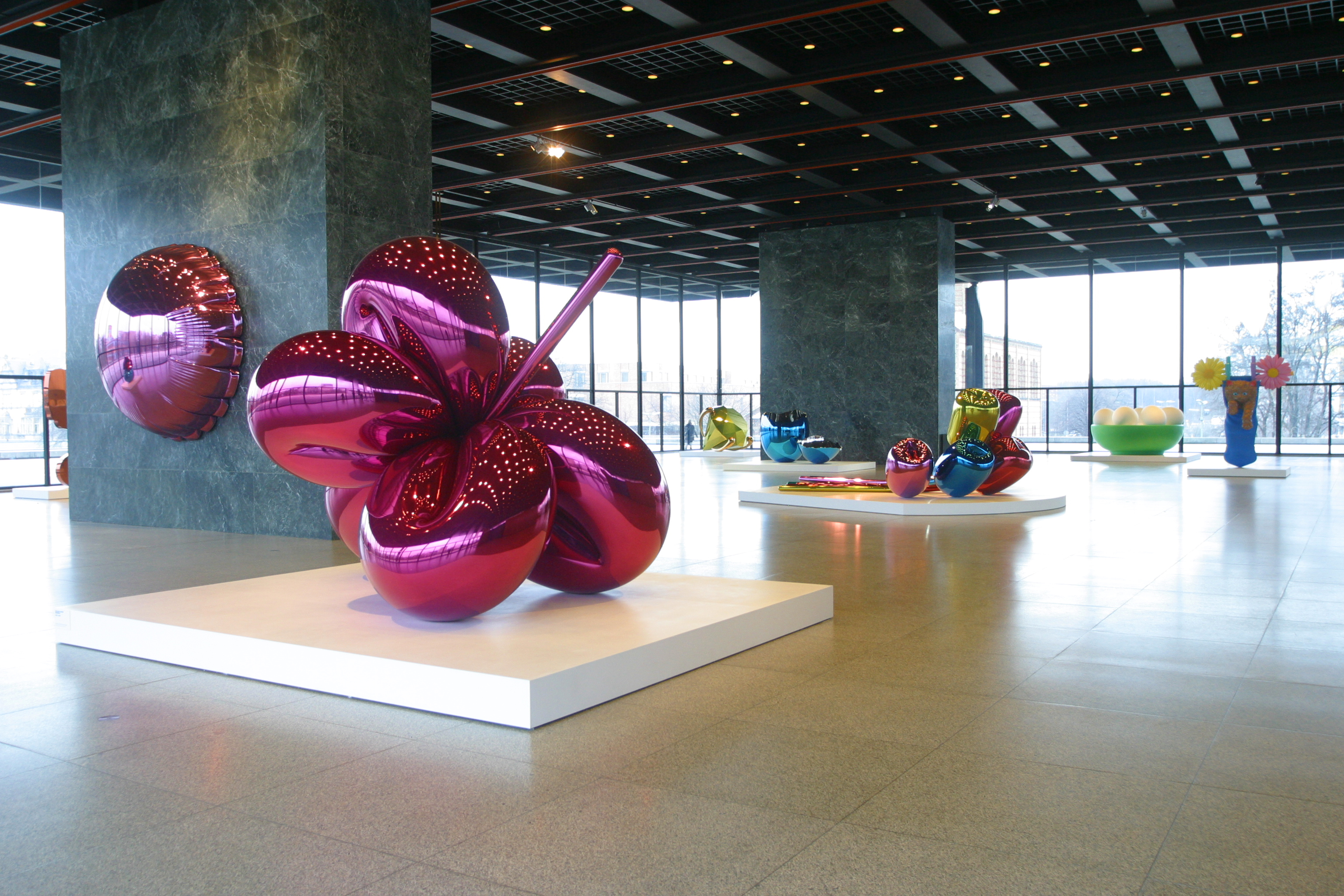Jeff Koons currently ranks as one of the most internationally significant and successful artists and represents the ‘cult of the artist’ better than any other artist in the present day. By the end of 1980s he had long since become well known to a large section of the public through such series of works as Banality (1988), or Made in Heaven (1989–1993) as well as by the very manner in which he presented himself to a wider audience. Jeff Koons works with the instantly recognizable emblems of popular culture: with the garish, the loud and colourful, as well as with the playful and kitschy, while at the same time clearly positing himself within art historical traditions. By doing so he draws on two of the most important artists of the modern day – Marcel Duchamp and Andy Warhol – as well as on the language of forms and theory of composition of the Baroque and Rococo.
As part of the major series of exhibitions exploring The Cult of the Artist, in the New National Gallery’s upper hall, some 11 sculptures from Jeff Koons’ Celebration series will be on display which the artist has now been working on periodically since 1994. For the first time ever, this series of works, which will eventually comprise a total of 16 paintings and 20 sculptures, is to be shown with so many pieces at once. Celebration translates the design vocabulary of children’s toys and gift and luxury items into large-scale sculptures and paintings of vibrant colour. In the giant sculptures on show here, the artist combines several media which he already developed in earlier series of works. In the Inflatables of the late 1970s, such things as a blown up child’s toy, figures and flowers are seen reflected in an assembly of mirrors, in which the colourful image of the bright objects is multiplied; in the Equilibrium series of the 1980s he cast such objects as rubber dinghies or oxygen masks in bronze and thus rendered their practical value absurd. Equally in the 1980s he also for the first time made use of stainless, high gloss steel in Luxury and Degradation. These components – the handling of inflatable objects, the exploration of mirror effects and the transformation of everyday objects in steel – are all combined by Koons in the sculptures from the Celebration series.

